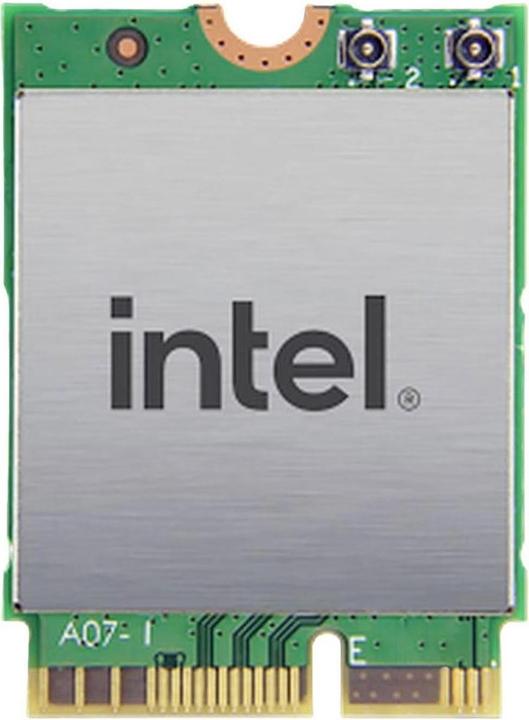
Intel AX211.NGWG.NV
M.2 A Key

Intel AX211.NGWG.NV
M.2 A Key
Why not? Swiss prices are usually higher than German prices. Import, storage etc... are more expensive in Switzerland than in Germany.
There's no aerial. It's already in the module.
Probably the same problem as I had (see the thread on my question). So it needs an adapter. But I don't know. You can check the motherboard specs to see if it supports the M.2 Key E.
You want to know which module works. Check the following properties of your computer: 1. ) CPU generation and CPU type. The CPU type (Pentium, I3, I5, I7, I9) determines whether the Wlan module needs vPro (NGWG) or non-vPro (NVWG.NV). The Intel CPU generation determines whether the CPU is also CNVio2 or only PCIe capable. - The AX210 uses PCIe, which is the case with older CPU generations. - The AX211 module uses the proprietary CNVio2 protocol. This works from the 10th generation of Intel CPUs. - The AX411 Wlan module ("Killer") works with 12th Gen. Intel CPU. Not only the CPU, but also your motherboard should support the M.2 connections and protocols! 2) M.2 is a general standard. The so-called key determines which hardware works. This key is a cut-out in the slot. There are keys A to M and combinations thereof. The Wlan modules have the key A+E, An NVMe SSD uses Key-M, A SATA SSD uses KEY B+M (see Wiki). If your motherboard has free (mini-) PCIe slots, you can buy suitable PCIe-m.2 adapters. Please pay attention to the exact description of these adapters, it is easy to get the wrong one! For example: (I use this adapter with the AX210 module.) Delock Mini-PCI-Express Key-E, Digitec Art.nr.:13143499. 3) Some (older) Bios versions only support certain PCIe modules, e.g. LTE or WWAN modules. (e.g. HP 8560p laptop) It gives error messages when booting and is switched off. Therefore, install and check the most current Bios version! 4) WLAN+BT driver. The current Intel Wlan driver package now includes entire WLAN families. The installation is therefore no problem. 5) The Wi-Fi-6(E) access point(s) and the underlying infrastructure should be designed for the full data throughput to make full use of your module. It is best to check the Intel support pages and your PC manufacturer for the right module. Good luck!